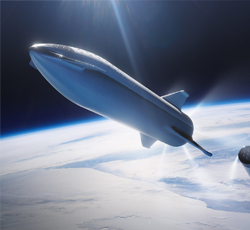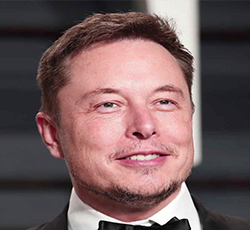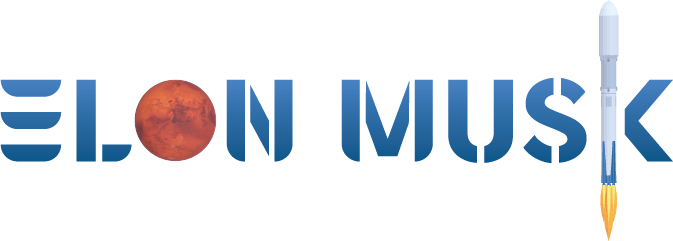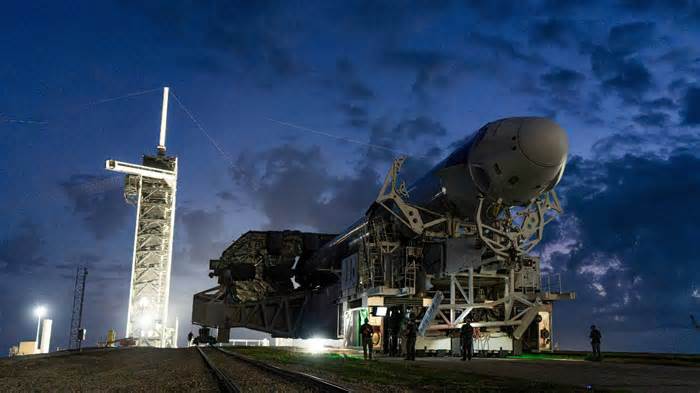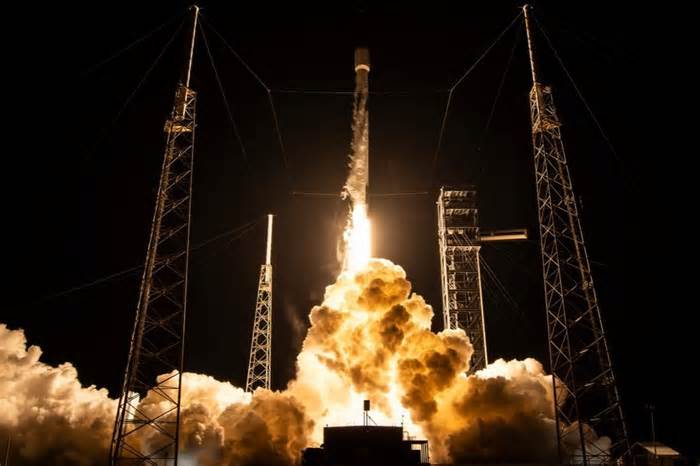
Elon Musk trades threats with Trump: What it could mean for SpaceX launches in Florida
- by Giants Wire
- Jun 06, 2025
- 0 Comments
- 0 Likes Flag 0 Of 5

Hear this story
SpaceX benefits from billions of dollars in contracts from NASA and the Department of Defense, which use many of the company's spacecraft to help launch government missions.
SpaceX's famous two-stage Falcon 9 rocket ‒ one of the world's most active ‒ is routinely the rocket of choice to get many NASA missions off the ground.
SpaceX's Dragon capsule is also a famous vehicle that is widely used for a variety of spaceflights, many of which have a crew.
When President Donald Trump took office in January, he began offering plenty of signs that his goals for U.S. spaceflight aligned closely with those of billionaire tech mogul Elon Musk.
Now those goals, which included making reaching Mars during Trump's second term a top priority, appear to be up in the air amid an increasingly volatile fallout between two of the world's most powerful men.
As insults have turned to threats, Trump has suggested he'd hit Musk where it could hurt most: His wallet. Musk's SpaceX has spent years positioning itself at the center of American civil and military spaceflight – a profitable relationship that has made the company's CEO incredibly wealthy.
In response, Musk has floated – and then retracted – the idea of decommissioning a SpaceX vehicle critical to NASA's spaceflight program.
The vast majority of SpaceX's missions with NASA and the government launch from Cape Canaveral, either from the space agency's Kennedy Space Center or the Cape Canaveral Space Force Station. SpaceX is also planning to bring its Starship operations to Florida by the end of 2025.
The most recent of SpaceX's private human spaceflights, a mission known as Fram2, took place in April. SpaceX was also famously involved in funding and operating the headline-grabbing Polaris Dawn crewed commercial mission in September 2024.
SpaceX's Falcon 9 rocket used for many NASA missions
SpaceX provides launch services to the Pentagon, including the launch of classified satellites and other payloads.
CEO Gwynne Shotwell has said the company has about $22 billion in government contracts, according to Reuters. The vast majority of that, about $15 billion, is derived from NASA.
SpaceX's famous two-stage Falcon 9 rocket ‒ one of the world's most active ‒ is routinely the rocket of choice to get many NASA missions off the ground. For instance, the rocket is due in the days ahead to help propel a four-person crew of private astronauts to the International Space Station for a venture with NASA known as Axiom Mission 4.
NASA also has plans to use SpaceX's Starship in its Artemis lunar missions to ferry astronauts aboard the Orion capsule from orbit to the moon's surface. The rocket, which is in development, has yet to reach orbit in any of its nine flight tests beginning in April 2023.
What is the SpaceX Dragon? Capsule is vital to US spaceflight
SpaceX's Dragon capsule is also a famous vehicle that is widely used for a variety of spaceflights. The capsule, which sits atop the Falcon 9 for launches to orbit, is capable of transporting both NASA astronauts and cargo to the space station.
Under NASA's commercial crew program, the U.S. space agency has been paying SpaceX for years to conduct routine spaceflights to the International Space Station using the company's own launch vehicles.
The first of SpaceX's Crew missions ferrying astronauts to the orbital outpost on the Dragon began in 2020, with the tenth and most recent contingent reaching the station in March for about a six-month stay. Standing nearly 27 feet tall and about 13 feet wide, Dragon capsules can carry up to seven astronauts into orbit, though most of SpaceX's Crew missions feature a crew of four.
The Dragon spacecraft also was the vehicle NASA selected to bring home the two NASA astronauts who rode the doomed Boeing Starliner capsule to the space station in June 2024. Certifying the Starliner capsule for operation would give NASA a second vehicle in addition to Dragon for regular spaceflights to orbit.
Musk says he could decommission Dragon before backing off
Because Boeing is still developing its Starliner capsule, Dragon is the only U.S. vehicle capable of carrying astronauts to and from the space station. It's also one of four vehicles contracted to transport cargo and other supplies to the orbital laboratory.
For that reason, Musk's threat Thursday, June 5 to decommission the Dragon "immediately" would be a severe blow to NASA if he were to follow through on it. Musk, though, appears to already be backing off on the suggestion, which he made in response to Trump's own threats.
In response to a user who advised Musk to "Cool off and take a step back for a couple days," Musk replied: “Good advice. Ok, we won’t decommission Dragon.”
Please first to comment
Related Post
Stay Connected
Tweets by elonmuskTo get the latest tweets please make sure you are logged in on X on this browser.






 Energy
Energy